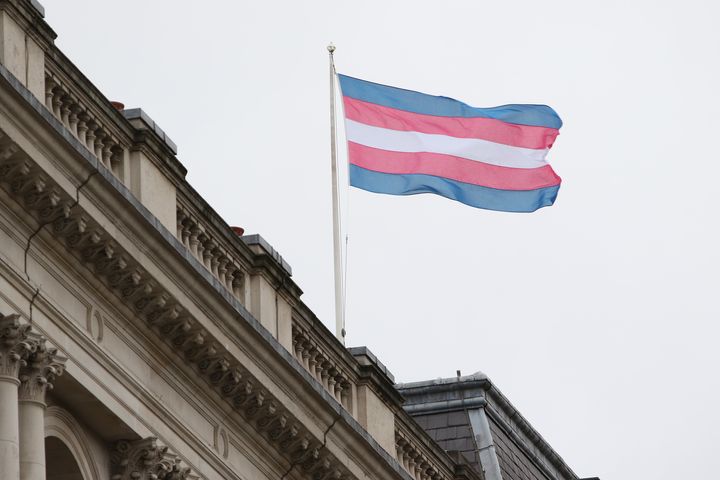Sorry. Inclusive Objectification Will Not Liberate You.
From the "body positivity" movement to "Down's Syndrome Drag," liberals push to include everyone under the male gaze

A middle-aged man called a fat woman “not beautiful” and the internet went into meltdown. The man was psychologist Jordan Peterson, and the woman whose appearance he commented upon, was model Yumi Nu.
Nu appeared on the front page of Sports Illustrated swimsuit issue with Lycra stretched from her groin and across her breasts in what looked rather like a wedgie-inducing harness. Predictably, liberal media outlets gushed that because Nu is fat (sorry, “plus-size”) this was a win for women and one in the eye to fascist beauty standards. Equally predictably, old-school misogynists said they wouldn’t shag her (which I’m sure was a huge disappointment to the internationally famous Nu).
Following the shoot, Nu wrote an article in which she argued that while the “fashion industry has become more inclusive” some “designers at certain high-fashion houses and dumb, angry guys on the internet, among others—just haven’t quite figured out yet that people who look like me belong everywhere everyone else does.” But those of us who set foot outside our houses are well aware that most people don’t look like stereotypical cover stars. That’s because the curated image of beauty that sells magazines is about advertising products, not promoting a message of social change.
Sorry. Not beautiful. And no amount of authoritarian tolerance is going to change that. https://t.co/rOASeeQvee
— Dr Jordan B Peterson (@jordanbpeterson) May 16, 2022
The Peterson-Nu clash divided commentary down the usual culture-wars fracture, but the wider point, that “inclusivity” looks suspiciously like objectification but with a wider variety of body shapes, was lost. Ultimately, no matter how weighty the body positive message it can’t blot out the fact that consumers like choice—providing a variety of bodies is not about inclusivity, it’s about marketing.
Looking appropriately sexy is something every woman is now encouraged to do. Botox and facial peels have extended the “sexy” shelf-life. For those who seek to capitalize on this, the more claims to “difference” a model has, the better.
When Paralympian Elena Krawzow posed for Playboy, the liberal media wet themselves over the opportunity to be pervy but progressive. At 18, the elite swimmer, who is visually impaired, debuted at the London 2012 Paralympics before going on to set a world record in 2016. As described by the BBC, Krawzow’s “success brought attention and the opportunity to break further ground” when she was invited to model for that bastion of equality Playboy.
Krawzow said:
"I was a little bit popular before - because I'm a world champion and had world records and all these things - but it was very important that Playboy made that request to do the shoot...
"I am the first disabled person to be on the cover. It was a step to show other guys in the world that people with a disability are the same as those without a disability."
No matter her sporting triumph, the implicit message is that Krawzow’s worth really lies in how attractive she is to men. More widely, the “right” to be sexually objectified is now championed as a great equalizer. For males, this means dressing-up as pornified stereotypes of women, as indeed, it does for females.
Outside of the world of professional modeling, body positivity hashtags on social media platforms are overflowing with women taking photos of themselves in their knickers because of some vague, pseudo-feminist notion of empowerment. Some seem to genuinely find the experience liberating, but a cynic might be prompted to ask whether producing borderline pornographic images that will stay online forever really changes much.
Down's Syndrome Drag: Inclusive objectification gone too far?
Arguably, one of the most troubling phenomena to emerge from the inclusive objectification movement is the trend for people with Down’s Syndrome (DS) to perform drag. The trend, known as "Drag Syndrome," has ridden in on the sequined trail of the mania for things rainbow and sparkly. Unlike with fat models or those with physical disabilities, the sexualization of adults with learning disabilities occupies a murky space where consent is less clear-cut.
Largely performed by cross-dressing men, some Drag Syndrome performances have overt sexual themes. In one video, a performer by the stage name Horrora Shebang is shown dancing in a black latex catsuit brandishing a whip. A clip from a 2019 performance shows members of the troupe alongside an apparently non-disabled pair of drag entertainers who are performing an erotic floor show in fetish gear.
In another film, a drag king with DS known as Justin Bond introduces her fellow performer “Davina Starr is very intelligent but can be a bit slutty sometimes and out of control.” Drag Syndrome choreographer and organizer Daniel Vais (who does not have DS) claims that the performances challenge stereotypes, showing people with DS as “whole human beings.”
People with learning disabilities are at particular risk of sexual exploitation—the existence of DS pornography is one example of this. And yet, rather than campaigning for increased support to allow people with DS to live full lives, it is easier to tick the diversity box by watching adults with DS perform sexualized stereotypes.
Even the DS Association says of Drag Syndrome that they “are group of adult performers, both male and female, who have chosen to express themselves through drag.” Adding the “DSA supports the rights of each member of Drag Syndrome to explore and discover their sexuality and express themselves in whatever way they choose.”
“The full humanity of women will never be captured in two-dimensions.”
The sexualization of people of different shapes and sizes does not represent a breaking of stereotypes, it further entrenches them. There is no escape from the male gaze, fat, disabled, or old- all bodies are now presented as products to be consumed. But the idea that being sexually desired by men is special, or a virtue that makes people powerful, is a lie. Regardless of Peterson’s apparent distaste for fat women, the truth is most men really aren’t fussy. Let’s be honest, a surprisingly large number of men will put their dicks in anything – from pavements to car exhaust pipes. So why is being attractive enough to give a man an erection deemed an accomplishment? A bumpy bus trip can accomplish the same feat.
Progress towards a more egalitarian society won’t come displayed on magazine covers, and nor will it be wearing an ill-fitting swimsuit. The full humanity of women will never be captured in two-dimensions.
The generous support of our readers allows 4W to pay our all-female staff and over 50 writers across the globe for original articles and reporting you can’t find anywhere else. Like our work? Become a monthly donor!
Enter your email below to sign in or become a 4W member and join the conversation.
(Already did this? Try refreshing the page!)





Comments